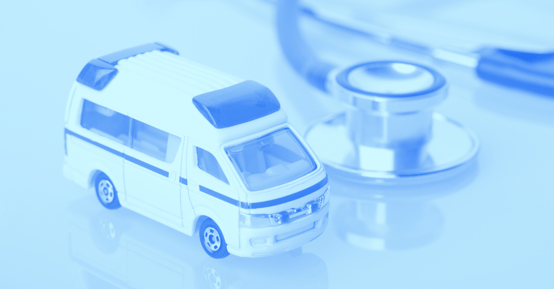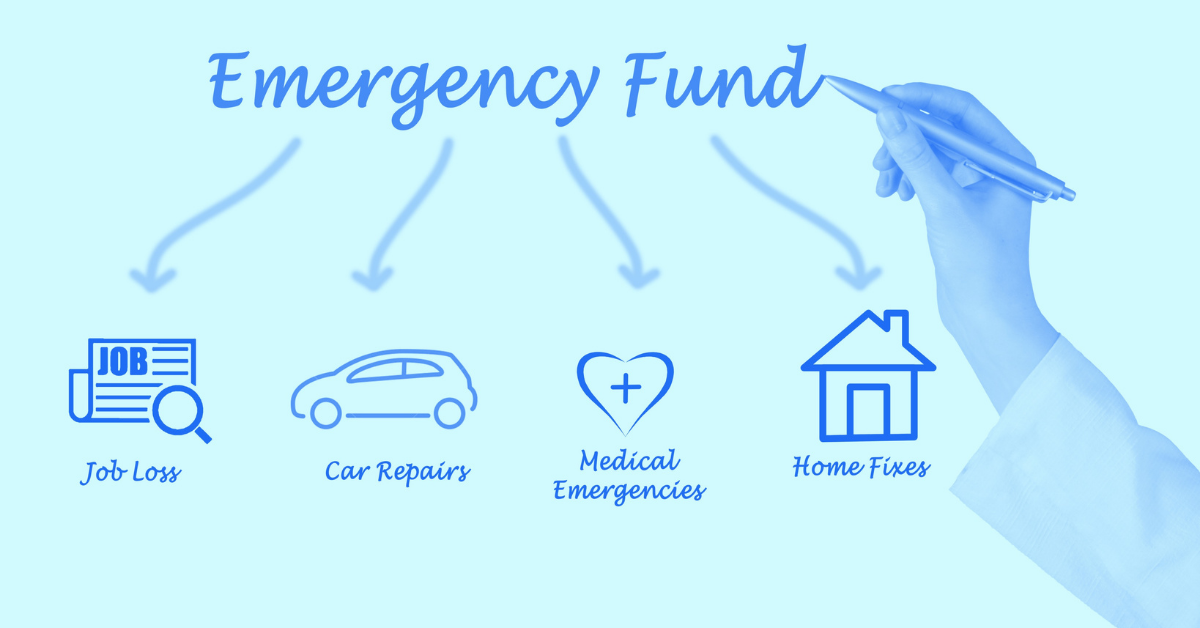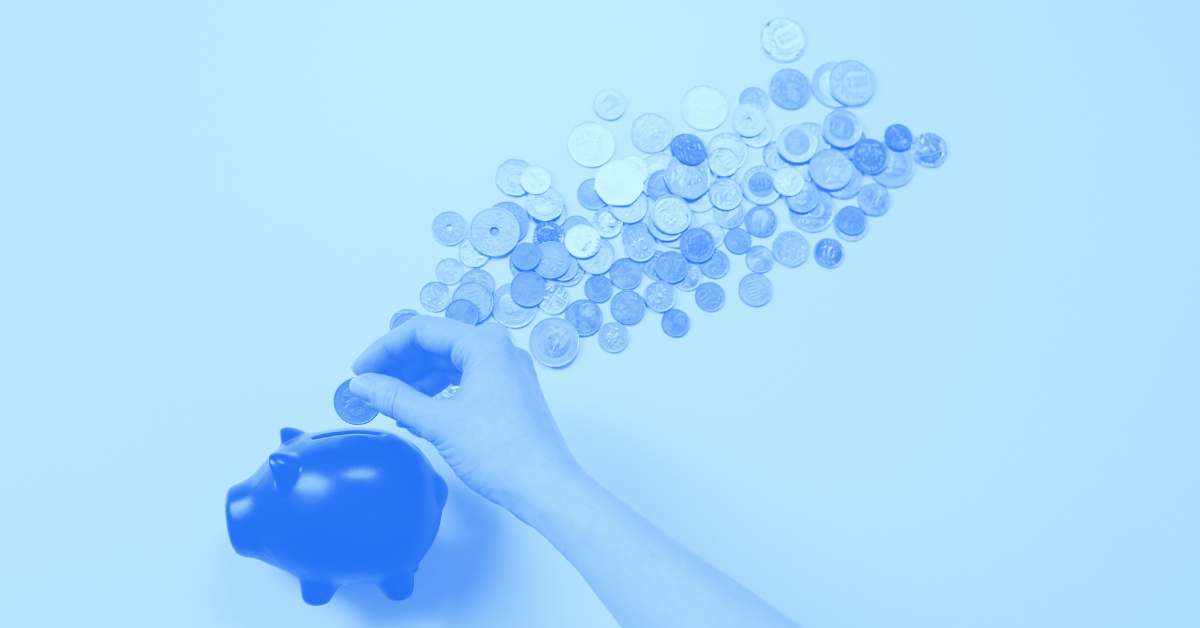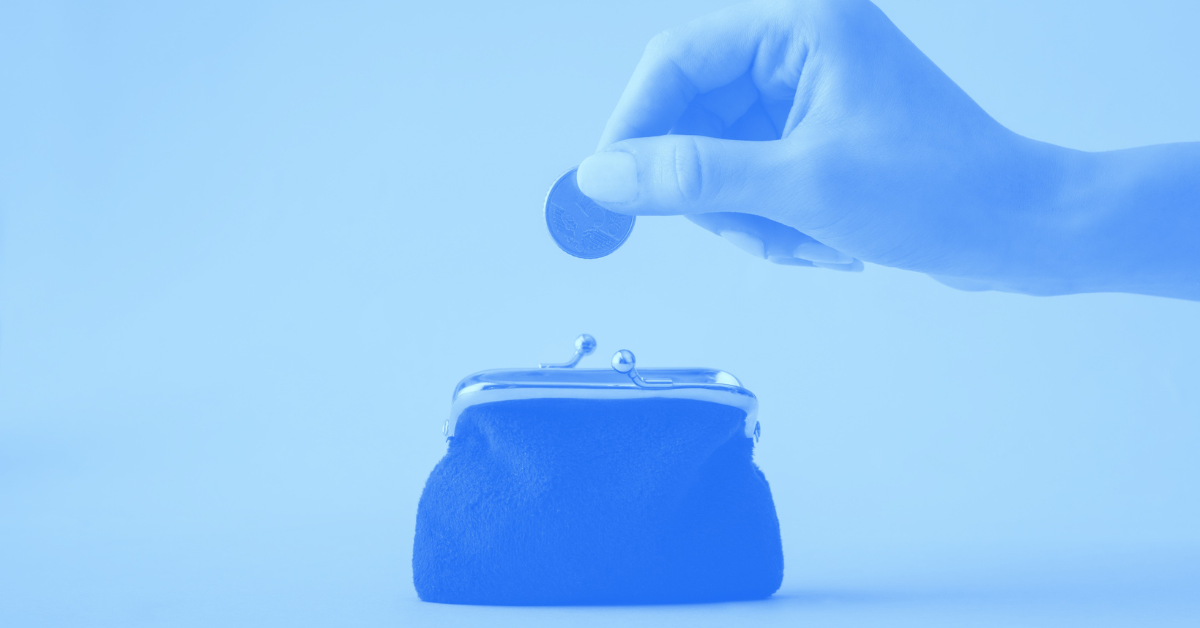Build an Emergency Fund: 5 Questions to Consider As You Save
Share this

8.0 MIN READ
To build an emergency fund sounds simple when you first think about it: An emergency fund is nothing more than money you set aside for a rainy day. The intention of those funds is to be there for you in case all else fails and you can’t cover an unpredictable expense with your normal monthly cash flow.
But when economic uncertainty increases and inflation goes up with it, it’s worth thinking through how you can be as strategic as possible with cash you have sitting on the sidelines specifically for “just-in-case” scenarios.
What’s the best place to store your cash reserves as you build your emergency fund? How much you should really save up when this cash might be sitting around for a very long time… or you mind find yourself in need tomorrow? And where is the overlap between your emergency fund and other cash savings you might have?
If you want to build an emergency fund that’s optimized and highly functional, you need to consider these questions—and ensure you have the optimal answers.
1. What Purpose Does It Serve to Build an Emergency Fund?
This might be easier to answer by first clarifying what an emergency fund is not for. You shouldn’t build an emergency fund only to find yourself:
- Using the funds for a big purchase (that you knew was on the horizon, or simply decided you wanted)
- Tapping your emergency fund for regular maintenance or repairs to assets (like a home) or possessions (like a car)
- Pulling from your cash reserves that are supposed to be for emergencies to fund an important goal
There’s nothing wrong with spending money on any of the above, but your emergency fund should not be the source of funding for these or similar examples.
Why? Because you can plan for these events, and therefore, you should!
Getting new tires, replacing an A/C unit at home, or taking a pet in for routine vet care might feel like an emergency if you don’t have sufficient cash on hand to handle these bigger expenses — but none of these are “emergencies” because they should be accounted for in your normal budgeting.
Even if you don’t pay for an expense monthly, if it’s known and predictable, then you should work it into your cash flow management. Here are a couple ways to accomplish this:
- Take a periodic-but-not-monthly expense, like an annual membership due or a disability insurance premium, and divide it by 12. Say you pay $5,000 per year for a professional retainer as an example: put that cost into your budget as a monthly line item for $417, and set the money aside each month until the bill is due for the year. That provides you with the cash you need to pay in total without having to scramble to come up with the full amount all at once.
- Create slush funds for specific purposes. Not everything is paid on a predictable schedule — and yet if you own a car, you know you’re going to have to replace parts on it eventually. You can set aside a certain dollar amount each month (or periodically as you receive lump-sum payments through things like bonuses, business distributions, or commissions) into a “car slush fund” that you can pull from anytime you need to spend money on your vehicle.
Your emergency fund is for emergencies, or expenses that you could not reasonably anticipate or see coming. That might include:
- Paying for unexpected medical bills in the case of an accident
- Covering a gap of income due to a job loss or business disruption
- Managing a major repair on your property (for example, you might be able to save for regular maintenance — but if the fridge goes on the fritz on the same day your basement floods, that’s a reasonable case for pulling from emergency reserves to get everything back up and running ASAP)
2. How Big Does My Emergency Fund Need to Be?
In general, your emergency fund should be large enough to cover your expenses for anywhere between three to six months at a minimum, although this recommendation varies from person to person depending on your level of financial obligation and personal comfort level with risk.
For example, a self-employed entrepreneur or independent contractor with variable income may need a larger emergency fund than, say, an accountant who works for a Big Four firm and receives not just regular paychecks but also bonuses and equity compensation.
If you’re in a position where you know your income isn’t reliable or predictable, building a bigger emergency fund might make more sense because you’re at higher risk of needing a backup system in lean times.
Similarly, a family of four with one working spouse and a stay-at-home parent might need a much larger cash reserve for emergencies than a dual-income, no-kids household because the family with children and just one income earner faces much higher financial obligations than the couple that doesn’t have dependents.
These variations in individual finances is why the recommendation is to to build an emergency fund that covers at least three to six months’ worth of expenses.
That should be the minimum starting point; many of our financial planning clients find they feel more secure and stable with emergency funds that could cover six to twelve months’ worth of expenses.
To calculate your own emergency fund need, review your normal expenses now. These expenses don’t have to include all the money you currently spend. You probably want to take into account what you’d truly need to cover in an emergency siuation.
Most people, for example, wouldn’t continue eating meals out every day or shopping for fun if they lost a job and therefore their income… even if they are in the habit of doing so while making good money.
Generally speaking, your emergency fund should cover vital expenses: your rent or mortgage, utilities, debt, insurance, food, transportation, and so on.
This will help you build an emergency fund that is sufficient, but isn’t so overloaded as to risk cash drag and opportunity cost — because, yes, there is such a thing as having too much cash on hand.
3. Where Should I Keep a Cash Reserve for Emergencies?
There are a number of options when considering where you should keep the emergency fund you build. Remember, the purpose of this cash reserve is for emergencies, meaning ease of access and safety of principal are your main priorities with this specific money.
While you can invest this money (and some people do, using an account like a Roth IRA since there are ways to access the funds you contribute without penalty), we recommend keeping your emergency fund in a cash savings account rather than investing it.
Putting the money into something like a Roth IRA may reduce the risk of losing value to inflation… but it also opens you up to a potentially bigger risk, which is interrupting the process of compounding returns at an inopportune time like when the market is down.
So when you build an emergency fund, where’s the best place for it? Keep it simple:
Use a traditional, plain ol’ savings account at your favorite bank: You might say liquid cash doesn’t weather inflation well. And you’re right!
Money in a savings account doesn’t accrue much — if any — value beyond the amount you put into it. With inflation at a 41-year high, this kind of savings can feel risky from a purchasing power perspective, and for good reason. Devaluation makes you feel like your fund is constantly shrinking.
But again, the purpose of an emergency fund is to be there when you need it, no matter what, so the safety of that money you worked hard to set aside to cover you in worst-case scenarios is paramount.
You don’t need to get overly fancy with this money. Instead of trying to optimize for growth, make it part of your overall financial strategy to review your need for cash on hand on an annual basis. If you feel you truly have more than you need set aside, move some of the excess to investments.
If you have to level up, then use a high-yield savings account. While we don’t recommend subjecting your emergency fund to the risk of loss an investment will introduce, you can at least get something for that cash sitting around via a high-yield savings account.
High-yield accounts make it easy to balance liquidity with growth and helps to at least mitigate the effects of inflation. At the same time, the liquidity of a high-yield account helps you get the cash you need when things are at their most dire.
Just make sure you can choose an institution to bank with an stick to it. Trying to chase better interest rates on a short-term basis isn’t effective.
If you just refuse to use a bank account, a money market account can be a reasonable alternative. Most banks require a large initial deposit to open a money market account, which makes them a great choice if you already have a big sum set aside and need a new way to store it.
In most cases, money market accounts earn more interest than a typical savings account and are fairly liquid.
Interest rates on money market accounts do vary, so make sure you check your preferred bank’s interest rates between high-yield and money market accounts to see which ones offer the best terms. And know that money market accounts do techinically present more risk than a savings account.
4. Are There Alternative Places to Keep My Cash?
Savings accounts and money market accounts aren’t your only options for emergency funds. While less popular and perhaps a bit more risky, the following options may be of interest to families looking for more insulation against inflation.
You can consider a CD: Certificates of deposits (CDs) hold a fixed amount of money for a predetermined amount of time (usually six months up to a few years).
But keep in mind, you can’t withdraw the money during that time without incurring penalties, which makes a CD less-than-ideal for a true emergency fund where the idea is you can get to your money now without facing an fee for doing so.
One upside of a CD’s “lockup” period? It may help you resist the temptation to use your rainy day fund for non-emergencies if you feel you just wouldn’t be able to stay out of a pile of cash.
Or use a Roth IRA, especially if you’re also behind on retirement savings: Again, Roth IRAs can work for those who feel the need to invest outweighs the need for liquidity (although we rarely agree with that logic when it comes to money you are specifically earmarking for emergency use).
While Roth IRAs are typically used as retirement accounts, there are ways to withdraw your contributions penalty- and tax-free.
Where this could make sense is for folks who may need to maximize their contributions to a Roth IRA for retirement. If you don’t end up needing the money for an emergency, you’re taking advantage of tax benefits that can result in favorable tax planning opportunities down the road.
5. Should I Have Cash Handy for More Than Just Emergencies?
Absolutely. It’s a prioritiy to build an emergency fund… but that might not be your only cash need.
You also need cash on hand to cover big purchases you know are on the horizon, as well as any short-term goals you want to fund (which are goals you want to achieve within the next 1 to 5 years).
Emergencies are disruptive, but they shouldn’t affect the rest of your life. By maintaining both an emergency fund as well as separate savings for short- and long-term goals, you’ll be able to make progress toward what’s most important to you while managing the financial curveballs that life inevitably throws.
 About the Author
About the Author
Eric Roberge, CFP®, is the founder of Beyond Your Hammock, a fee-only financial planning firm based in Boston, Massachusetts that specializes in providing planning services and investment management to professionals in their 30s and 40s.
Did you know XYPN advisors provide virtual services? They can work with clients in any state! View Eric's Find an Advisor profile.
Share this
Subscribe by email
You May Also Like
These Related Stories

Good Financial Reads: Emergency Fund 101

Good Financial Reads: Emergency Fund Advice



